Welcome to
American Eagle Medical




Carefully read all instructions and contraindications before use
The Pi’s Pillow is made of high quality foam and consists of two parts, a base and a removable pad (figure 1). The pillow has both disposable and reusable models (figure 2). The disposable pillow is in a vacuum package and can be easily stored within a small operating room of a hospital. The reusable pillow is good for limiting waste and is economical for a hospital’s budget. The pillow is available in four sizes: small, medium, large and extra-large. The small size is for smaller, pediatric patients; and the extra-large Pi's Pillow or Pi's Obesity Pillow is extremely useful when treating obese patients.
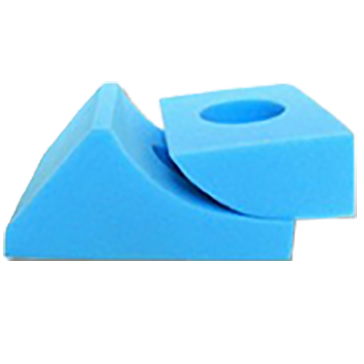
Pi's Pillow consists of a removable and adjustable pad/head-piece (on top) and a base (on bottom).
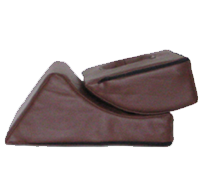
Reusable pi’s Pillow (regular size).
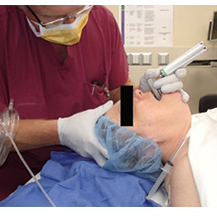
Before intubation, operator uses his right hand to push patient's head forward and in extension.
a. Pi’s Pillow facilitates mask ventilation, direct laryngoscopy, insertion of laryngeal mask, video laryngoscopy and fiber optic assisted tracheal intubation (figure 7, 8, & 9); b. The pillow enables internal jugular vein catheterization and cervical plexus blockade; c. It facilitates surgical procedures on the neck such as thyroidectomy or laryngectomy, and on the chest including open heart surgery and breast surgery as the chin and upper chest are elevated. d. It prevents respiratory arrest due to airway obstruction in the postoperative patient who is not totally awake; e. It facilitates cardiopulmonary resuscitation by opening the airway quickly and effectively. A patient can be ventilated immediately while waiting for an intubation. In addition, the pillow can be used in a lateral position such as in the performance of colonoscopy.
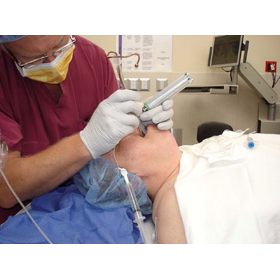
During intubation, head extension is maintained by the laryngocsope, the operator's left hand, and his right wrist and palm.
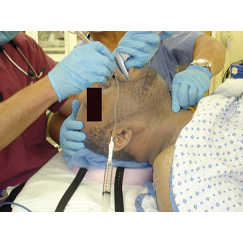
A resident is intubating with head positioning help.
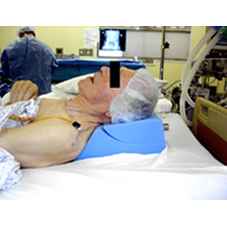
Pi's Pillow is comfortable for an awake patient.
One hour prior to using the pillow, the plastic bag must be opened to allow the pillow to fully expand. Proper positioning of the pillow is accomplished by ensuring the slope side of the pillow is beneath the patient’s shoulders and upper back. As soon as a patient loses consciousness, the pad is removed or it is moved down according to the desired degree of head and neck extension. For example, a patient who has an anterior larynx may need less head extension. The patient’s head drops into the concave part of the pillow’s base or the space between the base and the pad. After intubation, the removable pad can be replaced, partially replaced or not replaced. For surgical procedures on the neck, the pad can be adjusted to the surgeon’s preference. When the pillow is used in lateral position, the slope side and patient’s face are in same direction.
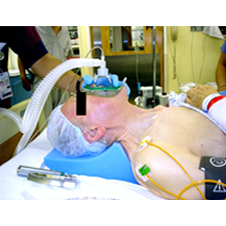
After induction the pad is removed and a patient is ventilated.
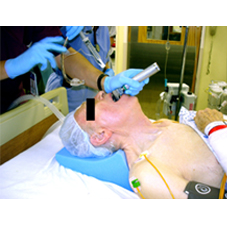
The base of Pi's Pillow creates an ideal position for an intubation.
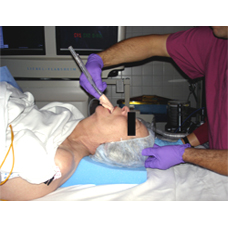
The base of the pillow creates an ideal position for LMA insertion.
Do not use the Pi’s Pillow for the patient who has an unstable cervical spine or high index of suspicion for the presence of cervical spine injury. If the O.R. table will be moved to extremes of lateral rotation, special attention must be paid to maintain head position.